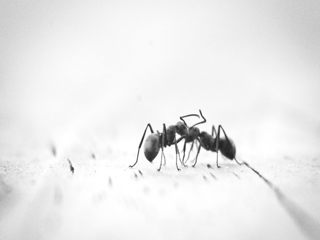How To Deal With Persistent Ant Problems

Dealing With Persistent Ant Problems
With an estimated 20,000 different species worldwide, ants are one of the most widespread and successful types of insects on the planet. The small but exceptionally prolific creatures are observed in virtually every possible setting ranging from subarctic areas to tropical rainforests. While most species of ants are benign, others create difficulties by nesting in residential areas, invading homes in search of food, and causing structural damage to buildings.
Within the highly developed urban areas of New England, certain types of ants normally construct nests in or near dwellings and become pests that send unsightly trails of workers throughout a structure to take good advantage of the various food and moisture sources available in such household settings. Despite the fact that the various kinds of ants share a lot of the exact same general traits regarding overall look and conduct, each species retains exceptional features, changing direction and identification of the pest insects.
Primary Ant Species
Of the many ant species found in New England, the ones usually struck indoors throughout the area are pavement ants , odorous house ants, and carpenter ants. Carpenter ants are named and best known for their ability to chew tunnels, called galleries, into pieces of wood. Black or red in color, carpenter ants can grow up to a half-inch long and frequently build nests in areas that are damp behind and about tubs, dishwashers, and sinks. Odorous house ants create indoor colonies near drains, pipes, and toilets and frequently also prefer habitats with considerable moisture. Sidewalk ants also do not assemble nest in the ground and instead wood galleries beneath paved areas like footpaths and driveways. Other ant species that usually enter New England residences include thief ants, cornfield ants, little black ants, pharaoh ants, acrobat ants, and yellow ants.
Ant Management
Removing and controlling ant infestations, whether inside or outdoors, typically involves using insecticide dusts, sprays, or entices. The choice of a particular process depends upon the species, nest location, and, in the case of entices, dietary preferences of the ant. Accurately identifying ant species remains vital to implementing strategies for correctly managing the pest insects, as each kind of ant responds differently to insecticides. Because the many varieties of ants discovered in New England may look and behave similarly to the untrained eye, area residents attempting to manage the insects should enlist the help of pest management professionals with the knowledge to identify the species and the tools necessary to implement a productive strategy for removal.
Have you ever seen Carpenter Ants?
Carpenter ants make their nests both indoors and outdoors. Ant colonies include Workers, Males & Queens. There are several species which can live in houses; regular workers are black or black and red in color. Carpenter ants are often larger than other varieties of ants. You may on occasion see winged Males or winged Queens, in addition to the worker ants which exist in much greater numbers.
Did Carpenter Ants invade your property?
Carpenter Ants nest and seek near damp wood. Indoors, Carpenter Ants might have discovered a region of your home prone to leaking, high condensation, or poor air circulation. It's not uncommon to find ants living around tubs & sinks, showers, behind tile work, near dishwashers, under roofing, siding, in loft beams, or in insulation. Once a parent colony is established, Carpenter Ants my set up satellite nests, which do not need a location near moisture. So it is fairly possible Carpenter Ants may be living and travelling some distances to and from the moisture source.
What do Carpenter Ants Eat?
Carpenter Ants excavate and remove wood to make their tunnels, and nesting areas called galleries. For their food, Outside Carpenter Ants are drawn to a sweet liquid called honeydew, created by aphids, Indoor Carpenter Ants may feed on other sweets and honey, syrup, sugars, jellies, and may seek protein sources like meat and fish. Carpenter Ants should forage for food, so in addition to their action during mating season rituals, all these are also the times you are likely to see ants. Carpenter ants are usually more lively at night, between midnight and sunset.
How Can I tell if I have a Carpenter Ant issue?
It is always wisest to consult an expert, as discovering where a nest, or nests, exists, can be troublesome. If you see Carpenter ants at home in early spring or late winter, chances are you've an indoor nest. Odds are you've an indoor nest if you see large numbers of winged ants inside during swarming. After mating, Queens seek other appropriate nesting places and lose their wings. Also, seeing ants in the winter is another great hint you have an indoor nest.

